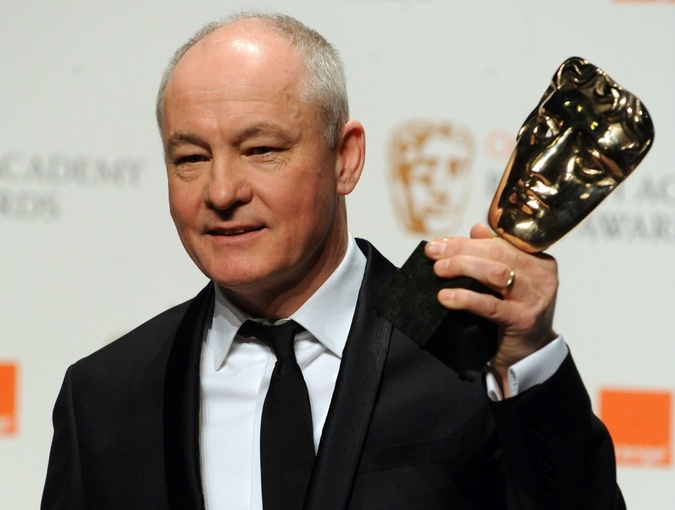Ken Loach is one of the most familiar faces at Cannes, where Saturday he is in the running for a record-breaking third Palme d'Or, but when you shoot one of the British maestro's movies it's all about staying hidden.
"The aesthetic comes from hiding the camera so you are always in the corner of the room," said Barry Ackroyd, one of Loach's most loyal directors of photography, who picked up a special cinematographer's prize at the French Riviera festival this year.
As well as making a dozen films for Loach he has also shot movies for Paul Greengrass including "Jason Bourne" (2016), and "The Hurt Locker" (2008) by Kathryn Bigelow, for which he won a BAFTA.
Loach's films "are always from a human perspective so you will very rarely see any tracking movements unless it's someone running and there will be a pan... but the perspective is always eye level and for lenses nothing wider than your field of vision."
As for techniques like zooms, these are "blasphemous"in Loach's cinema.
"The key to it is framing and balance. He is very classical... he likes things to be clean and tidy in this world that is messed up.”
When shooting a scene, the crew all have "baseball caps on, heads down," Ackroyd said. "He wants great technique but he wants it to be very hidden."
- Two decades with Loach -
Ackroyd grew up in the industrial town of Oldham in an environment similar to the one in "Kes", Loach's landmark film from 1969 about a boy from a mining family who develops a bond with a kestrel.
One inspiring art teacher changed Ackroyd's life, he said, and he went on to make documentaries, shooting around the world for the BBC, Channel 4 and other media, and collaborating with the likes of Nick Broomfield.
Ackroyd began working with Loach on "Riff Raff" (1991) and continued on nearly all his features for the next two decades.
He shot classics for Loach including "My Name is Joe" (1998) and "The Wind that Shakes the Barley" (2006), that won Loach's first Palme d'Or at Cannes.
Their last collaboration was "Looking for Eric" three years later.
Ackroyd said "socialism" was the bond that holds Loach's crew together.
"You want to see a better world and you feel a part of it when you are making a film for Loach. Giving people options to think... injustice must be put right."
Working with directors such as Greengrass, Bigelow and Adam McKay ("The Big Short") allowed his "camera to take off," Ackroyd said, in a way he could not do with Loach.
But he has never forgotten the principles he learnt from the British master.
"I can't break those rules. I stand back much further than most people do on a film set. I use longer lenses and I use that zoom as a conscious eye. My intention is to bring the audience with you."
eab/er/ach
© Agence France-Presse
Your content is great. However, if any of the content contained herein violates any rights of yours, including those of copyright, please contact us immediately by e-mail at media[@]kissrpr.com.
Source: Story.KISSPR.com

